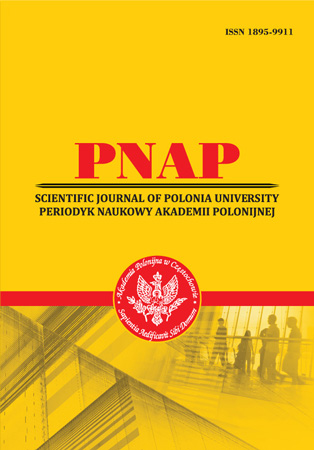DIRECTIONALITY OF THE LIVING: EVOLUTION, FORMS AND CONSEQUENCES OF MANIFESTATION (FILOMENOLOGICAL ASPECT)
Abstract
Based on the analysis of natural science research on directionality of evolution, a general criterion of evolutionary progress is formulated: a living being achieves the highest level of activity of the organism as a whole. The idea of a living being potential connection with his activity and life is stated. Potential is considered as a set of biological properties, qualities, internal adaptation mechanisms of any living organism, physical, mental, socio-psychological abilities, that are inherent for a human being and are inside him. Life, the attribute of which is activity, is impossible without full realization of the received potential and is the goal, to which a living being will always aspire, creating corresponding conditions of his existence. Value is a form of a goal manifestation. Everything that contributes to the achievement and realization of the goal will be values for a living being, a man. The main value for any living being is the desire to fully realize the inherent potential, to live a full life in an ever-changing environment. A general value of a man, as a living being, is the desire for the fullness of his life or love of life (philomenology). The degree of awareness of a man's existence and activity goal as well as the level of the general value development determines the nature of a man's attitude towards everything that he establishes links with, what/who he chooses, how he acts and the result of his activity.
References
2. Aristotel. (1981). Fizika [Physics] (Vol. 3). M.: Myisl. [in Russian]
3. Akoff, R., Emeri, F.O. (1974). O tseleustremlennyih sistemah [About purposeful systems]. M.:“Sov. radio”. [in Russian]
4. Drish, G. (2020). Vitalizm, ego istoriya i sistema [Vitalism, its history and system]. M., URSS. [in Russian]
5. Deci, E.L., Ryan, R.M. (1991). A motivational approach to self: Integration in personality. Nebraska Symposium on Motivation, 38, 237–288.
6. D’yachenko, I.N. (2019). AntropologIchniy povorot u pedagogItsI: teoretiko-metodologIchniy poshuk fundamentalnoYi tsInnostI dIyalnostI lyudini [Anthropological turn in pedagogy: theoretical and methodological search for the fundamental value of human activity]. Journal “ScienceRise: Pedogogical Education”, 1(48), 29–37. [in Ukrainian]
7. D’yachenko, I.N. (2012). Fenomen sub'ektivnoy vitalnosti:teoretiko-metodologicheskie osnovyi osmyisleniya [The phenomenon of subjective vitality: theoretical and methodological foundations of comprehension.]. Vestnik Zhitomirskogo gosudarsvennogo universiteta im. Ivana Franko. Filosofskie nauki. 62, 17–25. [in Ukrainian]
8. D’yachenko, I.N. (2017). Tsel, sredstva i tsennost deyatelnosti cheloveka(filomenologicheskiy aspekt) [Purpose, means and value of human activity (philomenological aspect)]. In A. Kordonska, R. Kordonski (Ed), Quo vadis, humanitas? (385–398). Warszawa-Lwow-Kijow: Wydawnictwo VERBINUM. [in Polish].
9. Deniskin, S.A. (2010). Poznanie zhivogo: teoretiko-metodologicheskie osnovyi [Knowledge of the living: theoretical and methodological foundations]. Chelyabinsk: Tsitsero, 2010. [in Russian]
10. Eshbi, U.R. (1962). Konstruktsiya mozga. Proishozhdenie adaptivnogo povedeniya [Brain design. The origin of adaptive behavior]. M.: Inostrannaya literatura. [in Russian]
11. Huxley, J. (1957). The three types of evolutionary process. Nature, 180 (4884), 454–455. [in English]
12. Nigmatullin, Ch. M. (2005). Tselepolaganie osnovnyih biologicheskih sistem: organizm, populyatsiya, soobschestvo i biosfera [Objective of the main biological systems: organism, population, community and biosphere]. Vestnik Nizhegorodskogo universiteta im. N.I. Lobachevskogo. Ser. Biologiya, 1 (9), 142–153. [in Russian]
13. Pittendrigh, C. S. (1958). Adaptation, natural selection, and behavior. In A. Roe and George Gaylord Simpson (Ed.), Behavior and Evolution (pp. 390–416). New Haven: Yale University Press. [in English]
14. Popov, I.Yu. (2006) Ideya napravlennosti evolyutsii: istoriya i sovremennost [The idea of the direction of evolution: history and modernity]. Vestnik SPbGU, Ser. 7, 4, 13–19. [in Russian]
15. Petrenko, V.F., Suprun, A.P. (2012). Tseleustremlennyie sistemyi, evolyutsiya i sub'ektnyiy aspekt sistemologii [Purposeful systems, evolution and the subject aspect of systemology.]. Trudyi ISA RAN, 62(1), 5–27. [in Russian]
16. Serikov, A.E. (2015). Diskussiya ob instinktah cheloveka v psihologii i etologii [Discussion about human instincts in psychology and ethology]. Vestnik Samarskoy gumanitarnoy akademii. Ser. Filosofiya. Filologiya, (17), 65–87. [in Russian]
17. Severtsov, A.N. (2017). Glavnyie napravleniya evolyutsionnogo protsessa: Morfobiologicheskaya teoriya evolyutsii [The main directions of the evolutionary process: Morphobiological theory of evolution]. M.: Izd. stereotip. URSS. [in Russian]
18. Severtsov, S.A. (1941). Dinamika naseleniya i prisposobitelnaya evolyutsiya zhivotnyih [Population dynamics and adaptive evolution of animals]. M.-L.: Izdatelstvo AN SSSR. [in Russian]
19. Shmalgauzen, I.I. (1982). Organizm kak tseloe v individualnom i istoricheskom razvitii [Organism as a whole in individual and historical development]. M.: Nauka. [in Russian]
20. Severtsov, A.N. (1939). Morfologicheskie zakonomernosti evolyutsii [Morphological patterns of evolution]. M. ; L. : Izd-vo AN SSSR. [in Russian]
21. Shmalgauzen, I.I. (1983). Puti i zakonomernosti evolyutsionnogo protsessa [Paths and patterns of the evolutionary process] (2-e izd.). M.: Nauka. [in Russian]
22. Shmalgauzen, I.I. (1939). Nauchnaya deyatelnost akademika A. N. Severtsova kak teoretika-evolyutsionista. [Scientific activity of academician A.N. Severtsov as an evolutionist theorist]. Pamyati akademika A. N. Severtsova: 1866–1936. M.; L.: Izd-vo AN SSSR, 1, 55–65. [in Russian]
23. Sattler, R. (1986). Biophilosophy. Analytic and Holistic Perspectives. Springer-Verlag. Heidelberg. NewYork, Tokyo, 212–236. [in English]
24. Sheffer, Zhan-Mari. (2010). Konets chelovecheskoy isklyuchitelnosti [The End of Human Exclusivity]. M.: Novoe literaturnoe obozrenie. [in French]
25. Thompson, D.W. (1992). On Growth and Form. Cambridge: University Press ; New Ed edition. [in English]
26. Vorobeva, E.I., Feoktistova, N.Yu. (2008). Akademik A.N. Severtsov i sovremennost [Academician A.N. Severtsov and modernity]. Zhurnal obschey biologii. Sinopsisy. 69(2), 84–93. [in Russian]
27. Waddington, C.H. (1957). The Strategy of the Genes: A Discussion of Some Aspects of Theoretical Biology. London: George Allen and Unwin. [in English]
28. Zavarzin, G.A. (2018). Fenotipicheskaya sistematika bakteriy. Prostranstvo logicheskih vozmozhnostey [Phenotypic systematics of bacteria. Logical Capability Space]. М.: URSS. [in Russian]
Abstract views: 224 PDF Downloads: 189







